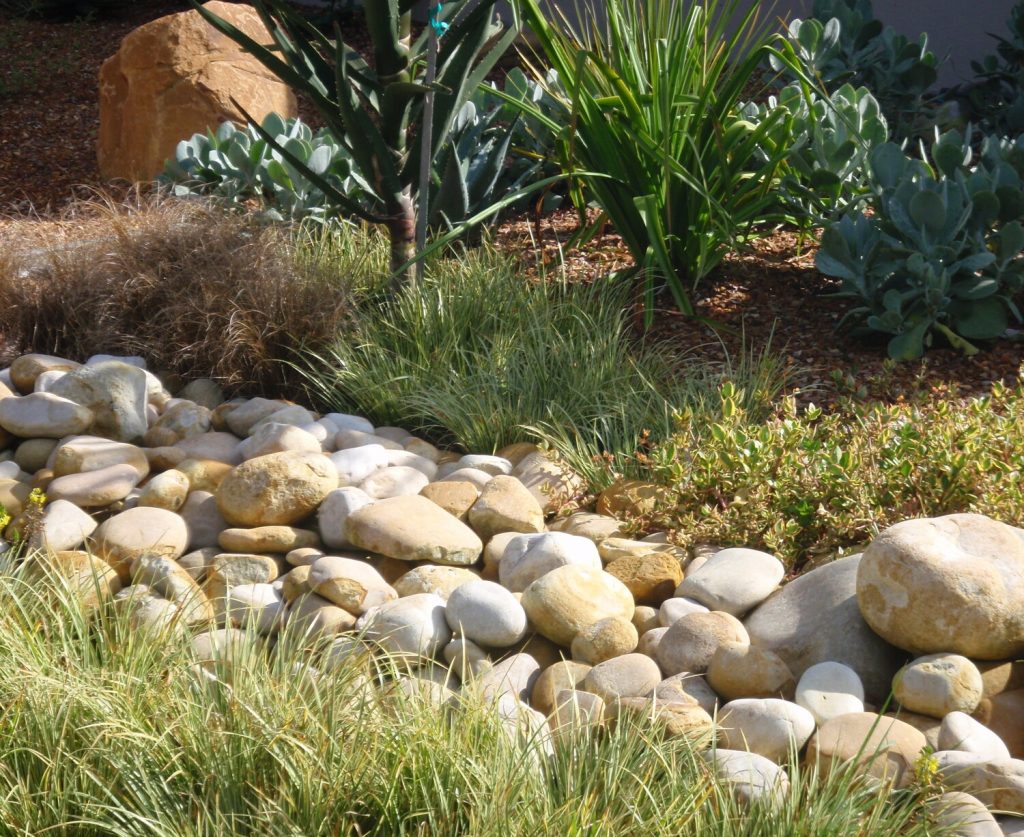7 Tips for water-wise gardening

Written by: Catherine Browne
Water is a scarce and dwindling resource, and South Africa is a dry country with unpredictable rainfall and an ever increasing demand for it. As the demand for this precious resource grows, so will its price along with legislation discouraging excessive use. It is, therefore, important to garden for the future.
Water-wise gardens cut down water usage but are still beautiful and, as there are so many indigenous options to choose from, water-wise gardening should be the norm.
Get water-wise with these seven easy steps from the Botanical Society of South Africa and SANBI:
- Choose locally suitable water-wise plants
There are numerous beautiful plants that require minimal to no watering once established. Remember to plant in autumn, after the first rains – this gives plants a full winter to develop a strong root system before facing the dry season.
The plumbago (Plumbago auriculatastrong) has a deep, strong root system ©Alice Notten
- Group plants according to their water needs
Water-wise plants need minimal watering once established. And by grouping your plants according to their water needs, you avoid wasting water on plants that don’t need it. Those plants that need more watering should be planted together in a small area where their water needs can be attended to.
- Reconsider your lawn
Lawns are thirsty so think about the lawn space you use and need. Buffalo grass requires less water and less mowing. Just don’t cut the grass too short as longer leaves shade the roots and reduce water evaporation.
- Prepare the soil well and add compost
Dig in plenty of compost as it aids the water retention ability of the soil, adds nutrients, and also encourages earthworm activity, which improves aeration and drainage. Remember to compost your beds at least once a year.
- Use lots of mulch between plants
Mulch helps to keep the soil cool and reduces evaporation. It also reduces run-off and erosion, suppresses weed growth, enriches the soil and prevents compacting of the soil. Mulch is available in a variety of options including bark, compost and dried leaves.
- Water correctly and only when necessary
Most people overwater. Save water by watering thoroughly but less often and when evaporation is lowest (early morning and evening). A drip or underground irrigation also saves water and reduces weed growth.
- Create shade and windbreaks
Wind and sun can dry out plants. Plant fast-growing, wind-resistant, water-wise trees and shrubs suited to your area to provide shade and shelter.
The Botanical Society promotes indigenous gardening and wise use of our country’s unique flora and precious resources. It also strives to create awareness and educate about floral conservation, and instil our shared passion for nature and biodiversity with others.
The beautiful, and indigenous, Breadasdorp sugarbush (Protea obtusifolia) ©Alice Notten
These water-wise principles are on display in the water-wise demonstration gardens at Kirstenbosch, the Walter Sisulu and Free State National Botanical Gardens. Many of SANBI’s national botanical gardens also sell water-wise plants.
Happy water-wise gardening. Here are a few other ideas for you:
– Find out more about indigenous plants here and water-wise gardening here. Also search drought resistant plants and plants suitable for certain climatic zones.
Source: Africa Geographic https://africageographic.com/stories/7-tips-for-creating-a-water-wise-garden/


Sorry, the comment form is closed at this time.